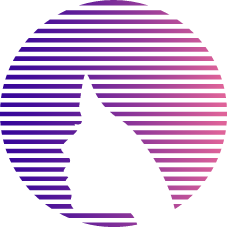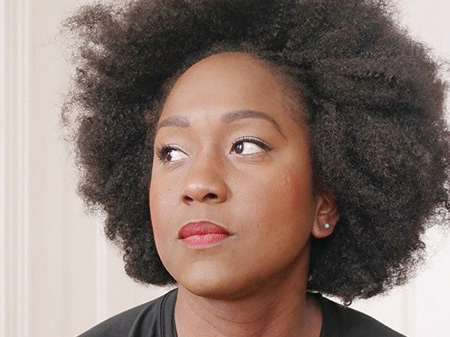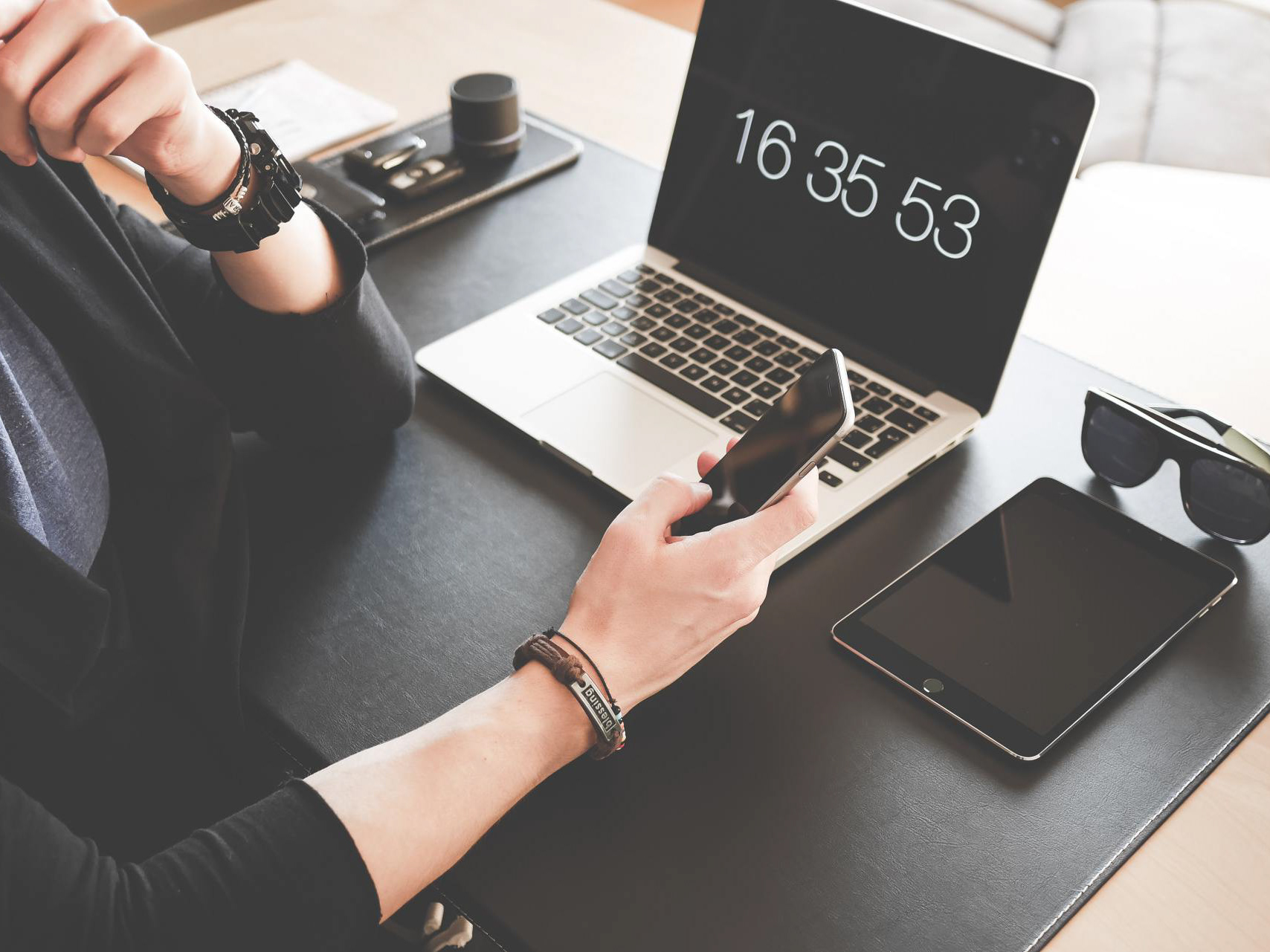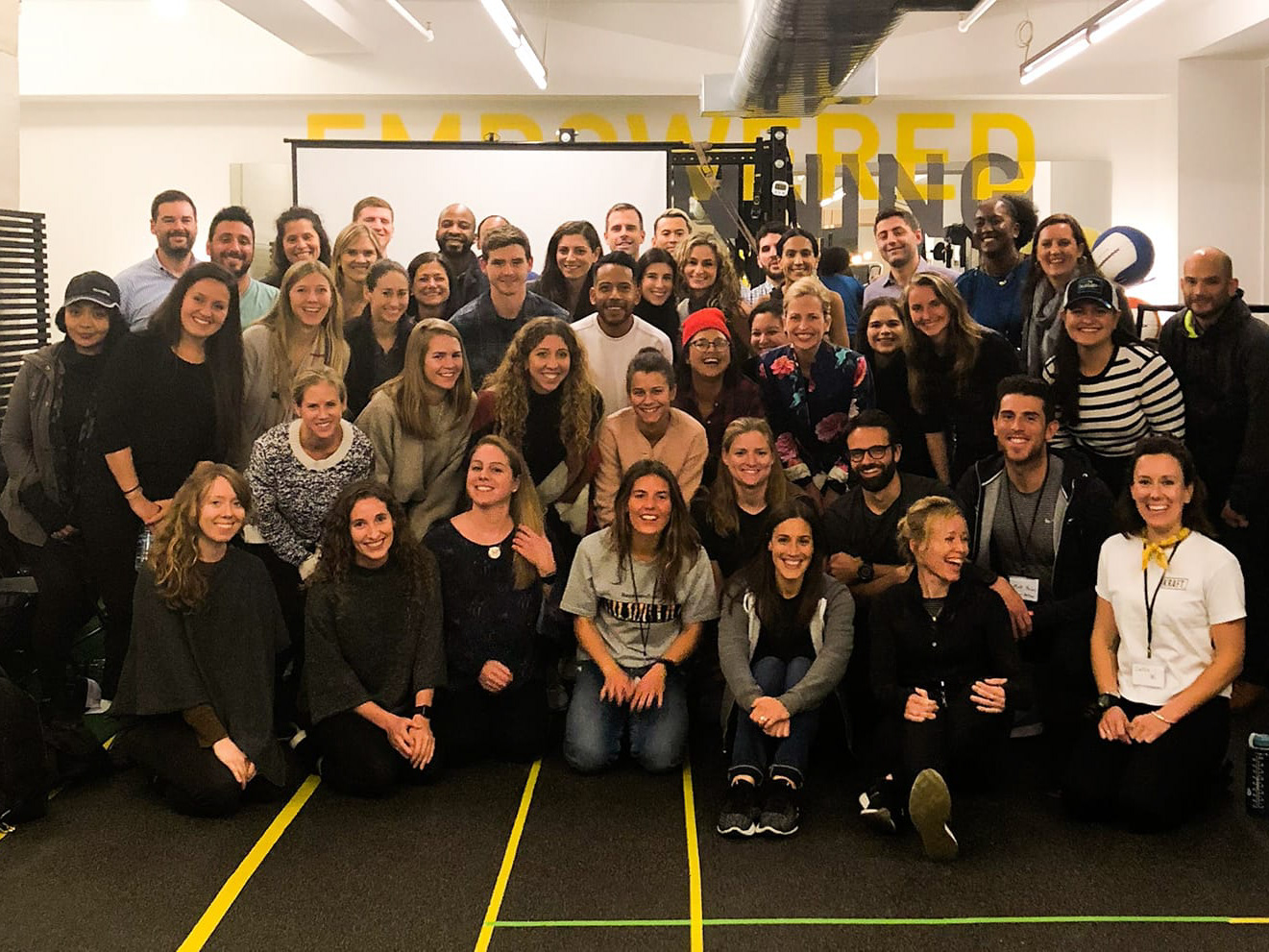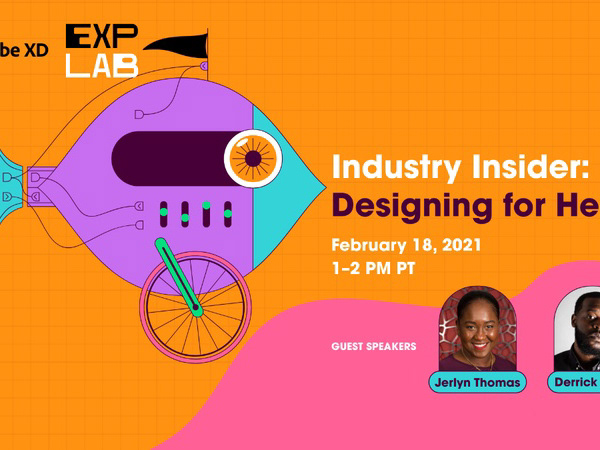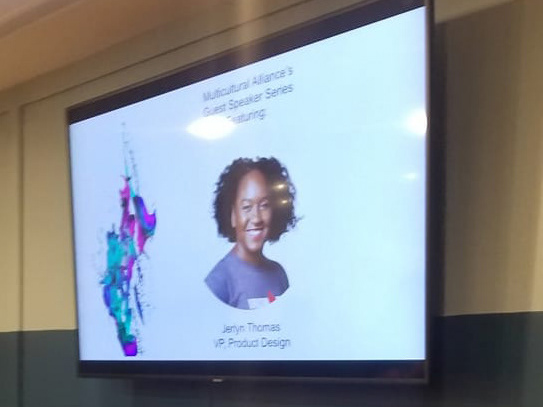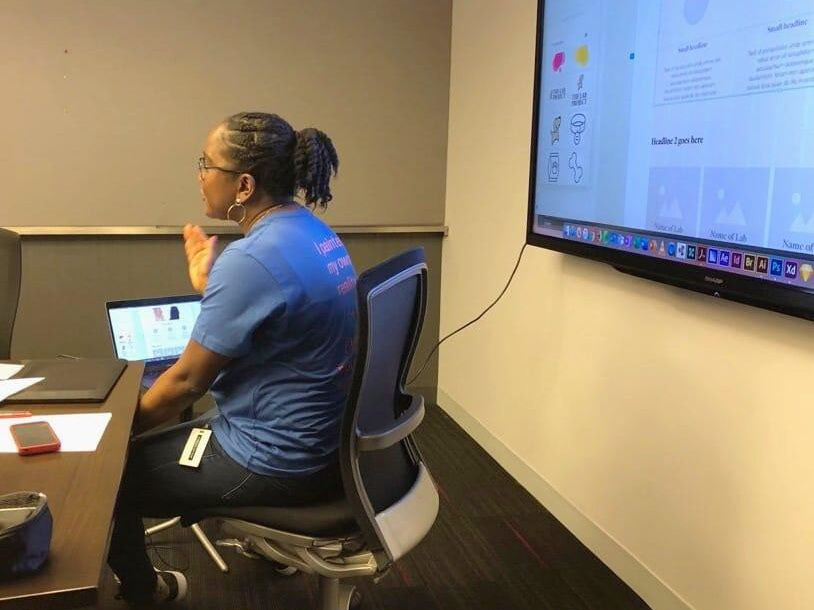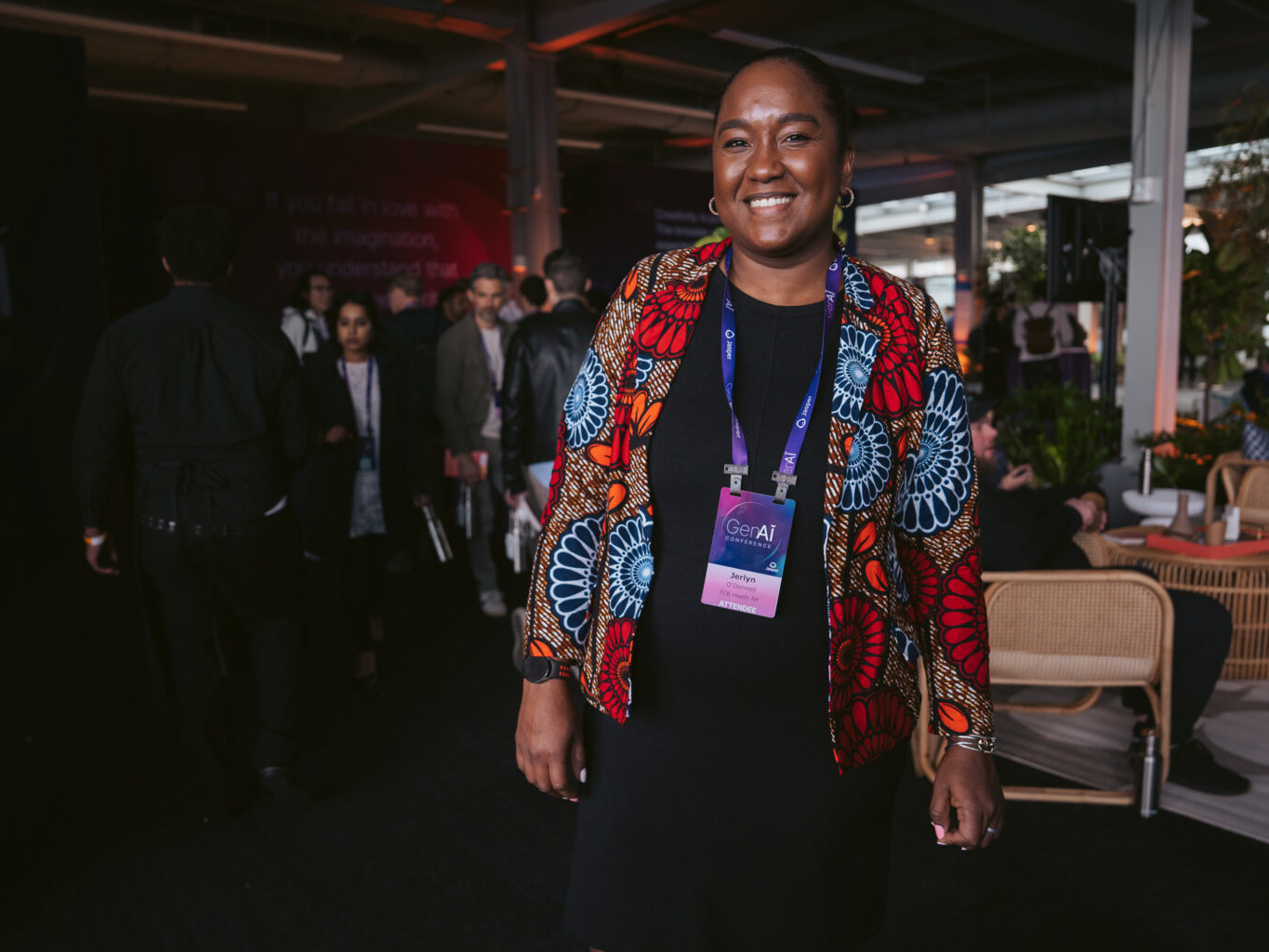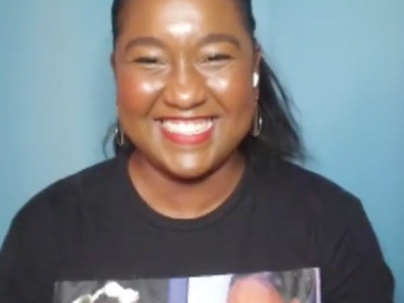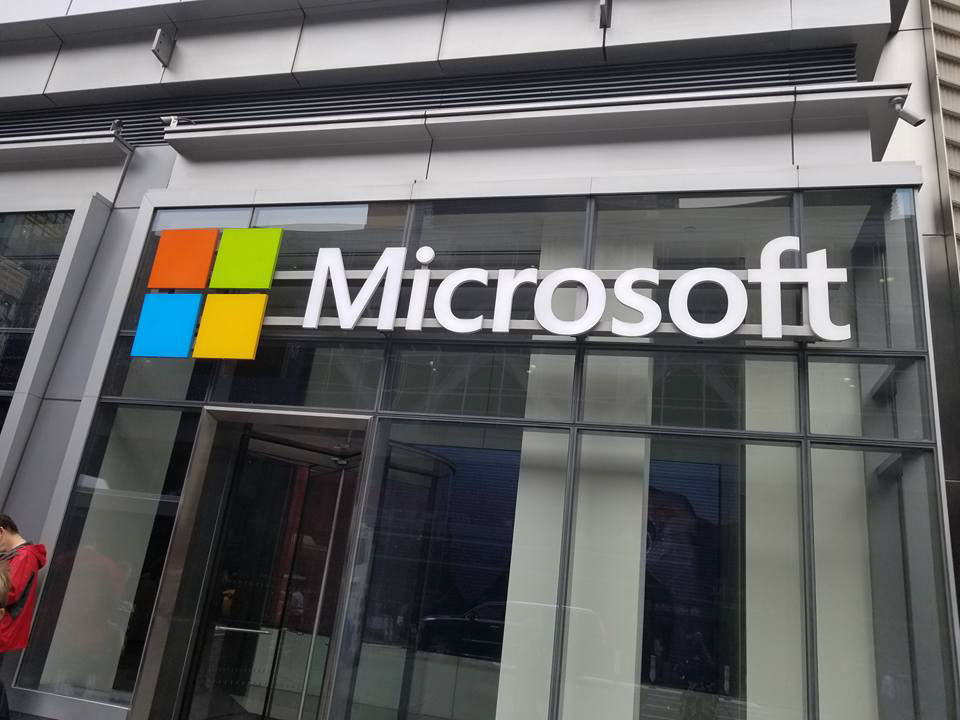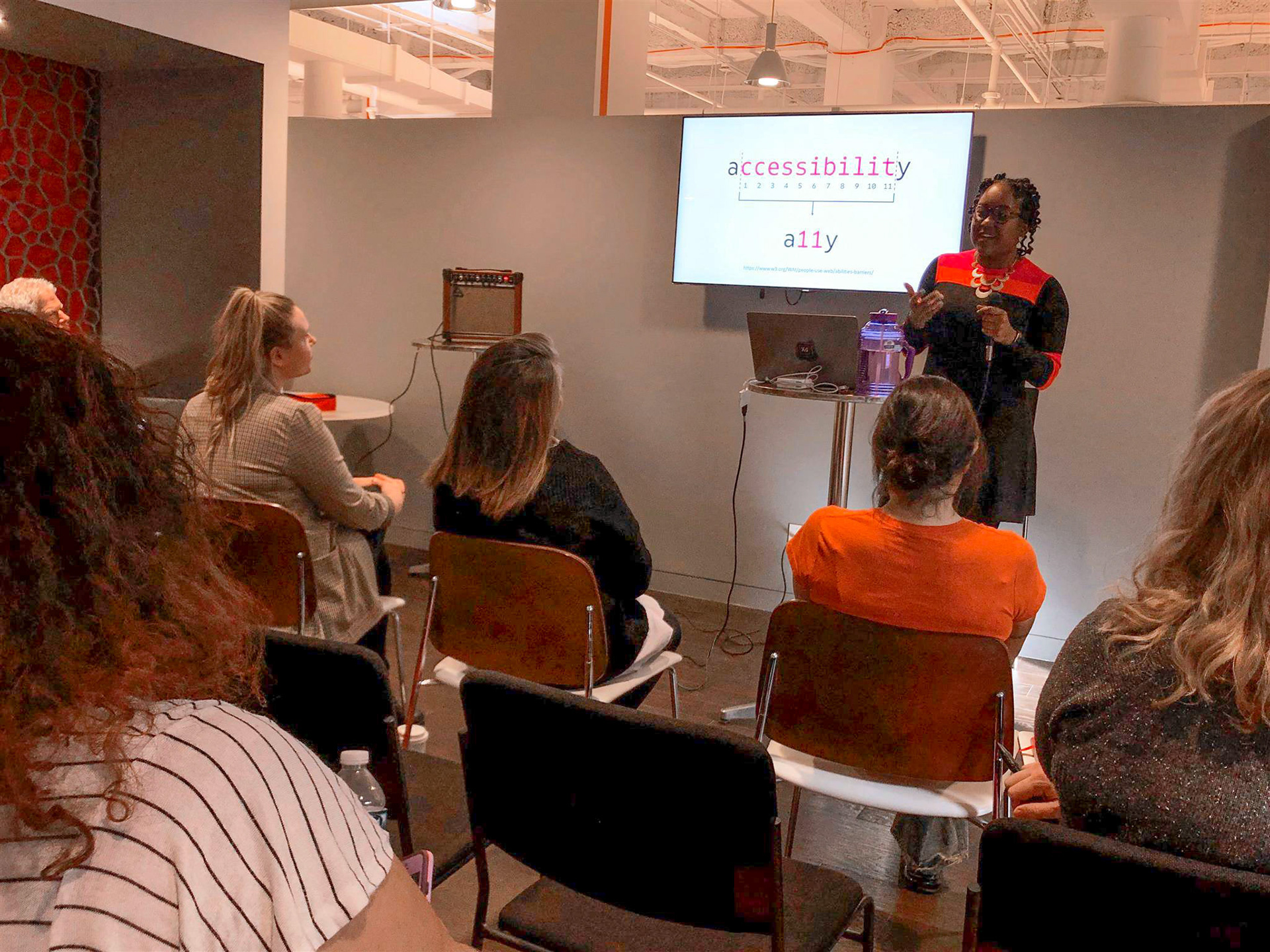
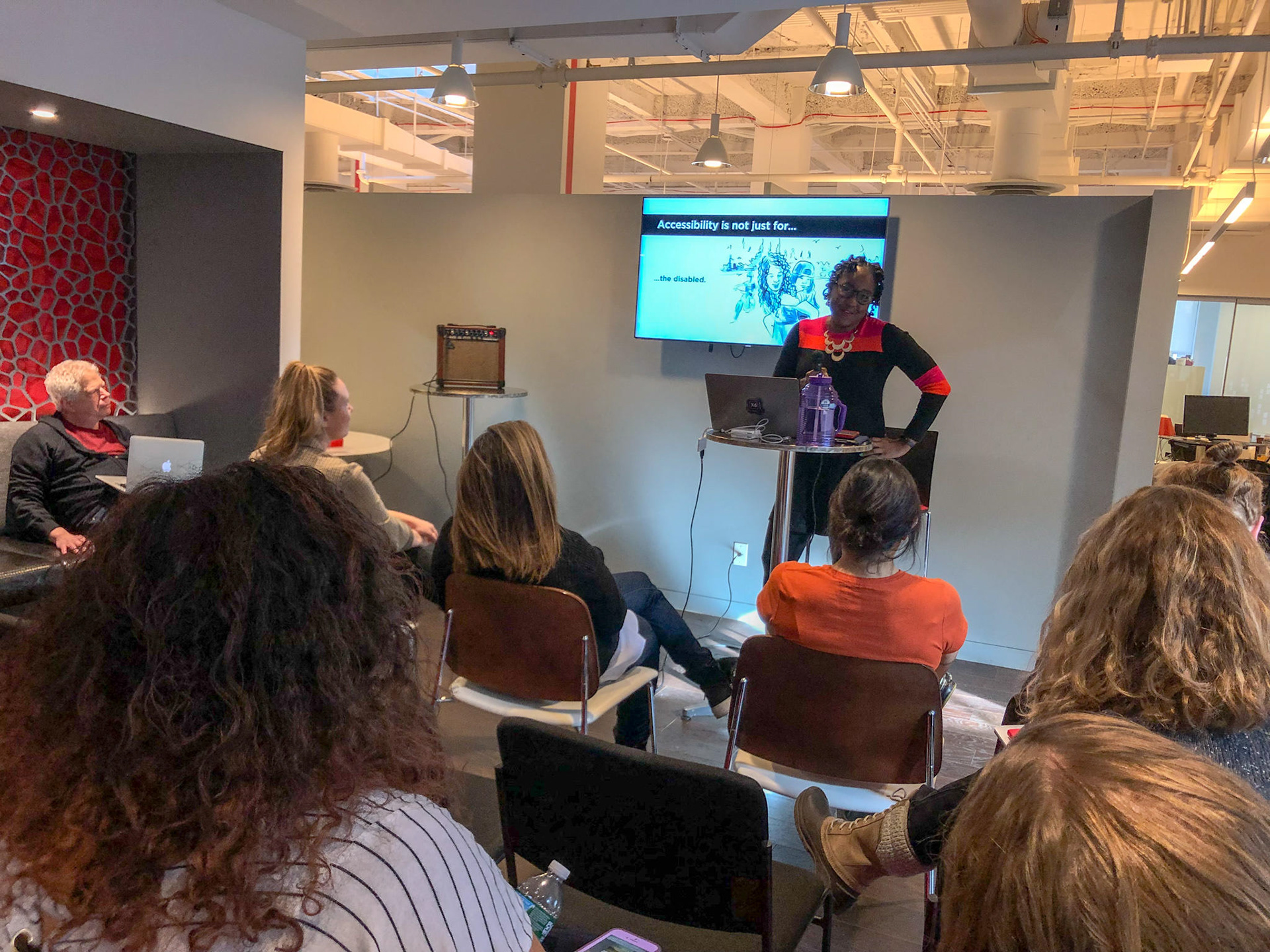
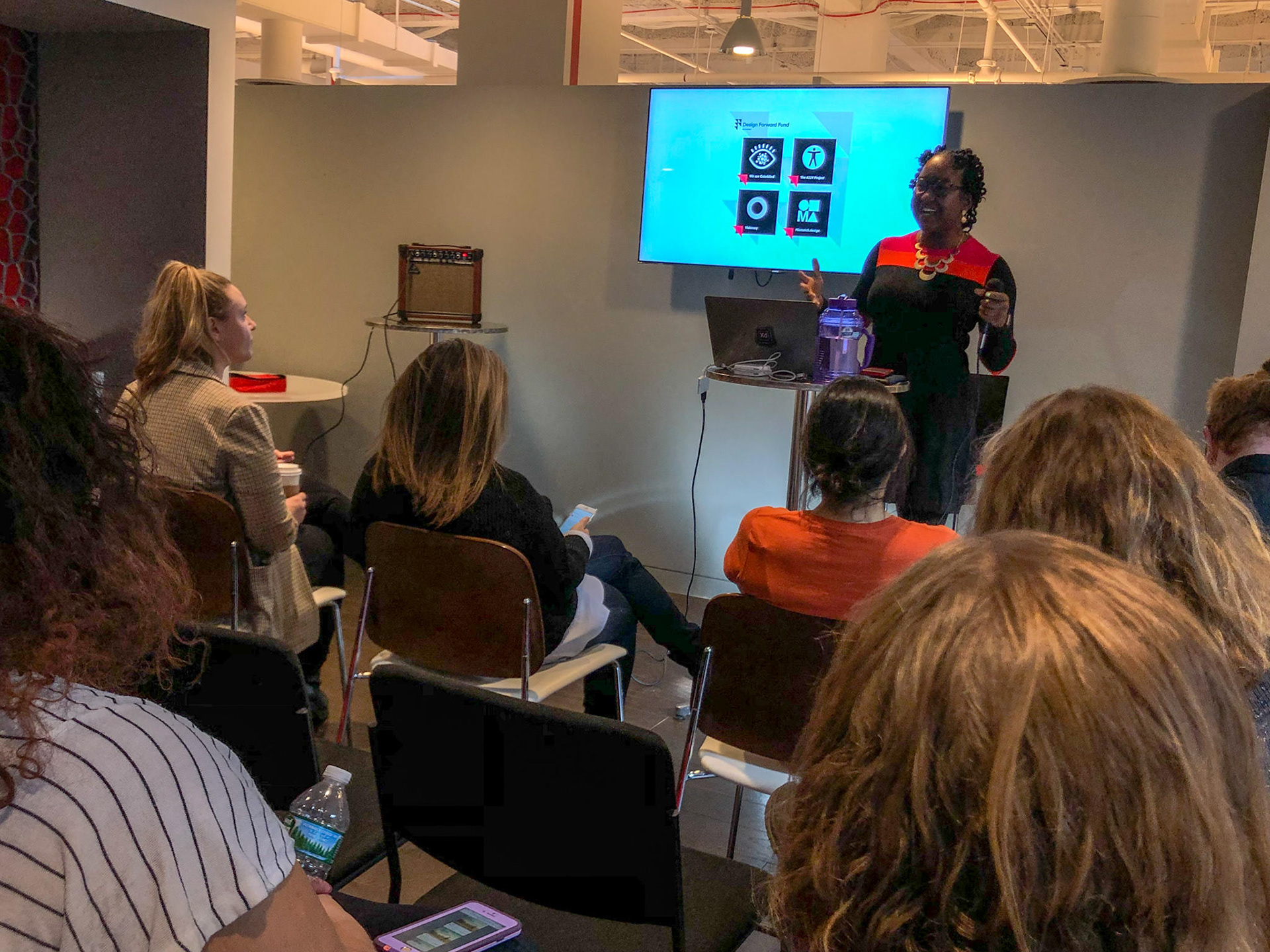
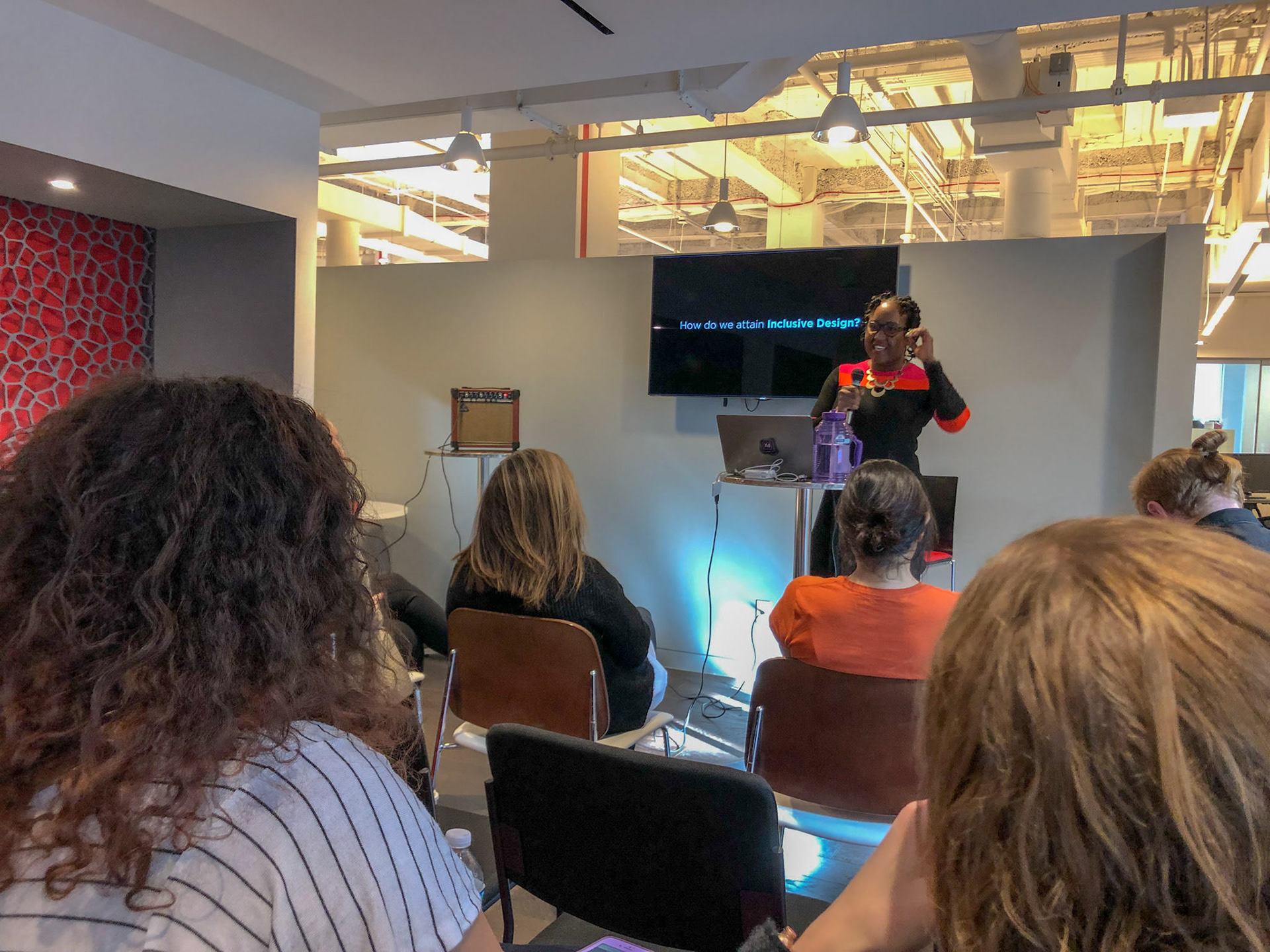
Attaining Inclusive Design with Empathy
After spending an hour with Christina Mallon-Michalove in the fall of 2018 to record her video interview for National Disability Awareness Month. I didn’t know that the hour would change my life.
In her early 20s, Christina developed a motor neuron disease resulting from a car accident, which left both of her arms paralyzed. However, I noticed that she had walked into the room on the 19th floor without assistance after navigating the NYC Metro system and she had a cell-phone. Curious about how she uses it, I asked her if she was comfortable showing me.
Illustration of my view of interviewing Christina
She removed her shoe with her toes (they had loops attached to them), dropped her phone to the floor (from a retractable cell phone case necklace) and started typing with her toes. I followed Christina on Instagram after that day. From there, I also learned that she also uses voice dictation, along with typing, to participate in the digital world. That experience made me wonder what other DIY (do-it-yourself) hacks that people with accessibility restrictions use to navigate the digital space.
I spent the next few months obsessively learning about access restrictions and how I could improve experiences for people like Christina. I wanted what I worked on to be inclusive and questioned how I was going to do so.
Nearly 1 in 5 people in the U. S live with a disability
Christina lives with a disability just like the 1 in 5 people in the U. S.
Disability tends to be defined by law and could be a physical or mental condition that limits a person’s movements, senses, or activities — according to the dictionary.
The areas that are considered are visual, auditory, learning, motor/mobility and seizures.
Although those areas are pretty broad, we can make design inclusive by considering the needs, experiences, and preferences for the widest possible group of people.
Sometimes this has to be a habit practiced instinctively and requires a bit of empathy. The easiest way is realizing that we all face accessibility issues on a daily basis. For example, have you’ve ever texted while walking? Did you realize you were temporarily disabled? You were unaware of your surroundings.
What about a leg injury? You’ll notice how difficult formerly simple tasks become. Throughout our lives, we’ll be constantly negotiating barriers that we take for granted. We’ll eventually age and possibly slow down. This is why I believe that everyone, over the course of their lifetime, should be able to benefit from barrier-free design, user-friendly architecture, and comfortable environments. The good thing is, many companies are seeing the benefits of focusing on that.
They also realize that it is easier, cheaper and faster to analyze and evaluate user experiences more now than before which means it’s better for the companies’ bottom line.
In other words, if a company can reach a demographic that experiences varying accessibility issues it can generate more capital. Which company wouldn’t want access to the 1.3 billion people (stat from the World Health Organization) with some sort of vision impairment, if they provided some sort of profit to their brand?
It has been months since I met Christina and because of her, I’ve generated habits like:
• Posting with descriptions if I’ve shared a video online (for people with limited or no auditory access).
• Designing in black and white, grayscale, or patterns before applying color and ensuring that they pass contrast checkers (for people with vision impairments).
• Learning about devices like screen readers and how they work or implementing voice-activated experiences (for people who might have dexterity limitations).
• Considering how people go in and out of space at conventions if they are using a wheelchair (for people with mobile restrictions).
• Limiting the use of certain lighting, motion and flickering for people who might have photosensitive epilepsy (to not trigger seizures)
• Being creative with instructions for learning for non-physical disabilities (for example, people with dyslexia).
• I’ve also become an a11y (a numeronym for accessibility where the number 11 refers to the numbers of letters omitted) and joined a local NYC group that holds workshops about accessibility.
• Realized that nobody’s perfect and with those simply considerations I’m already helping my peers create better UXs but also capturing entire demographics.


